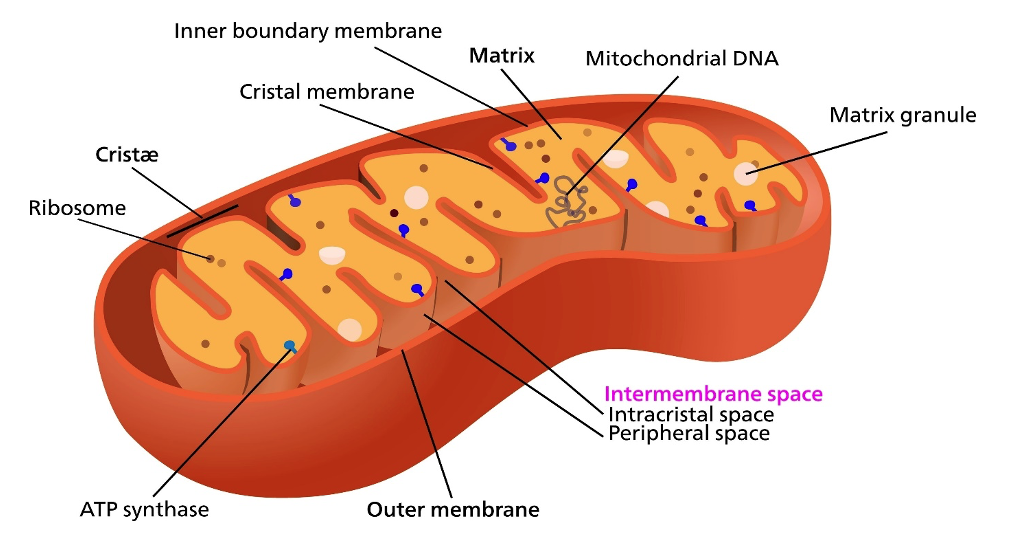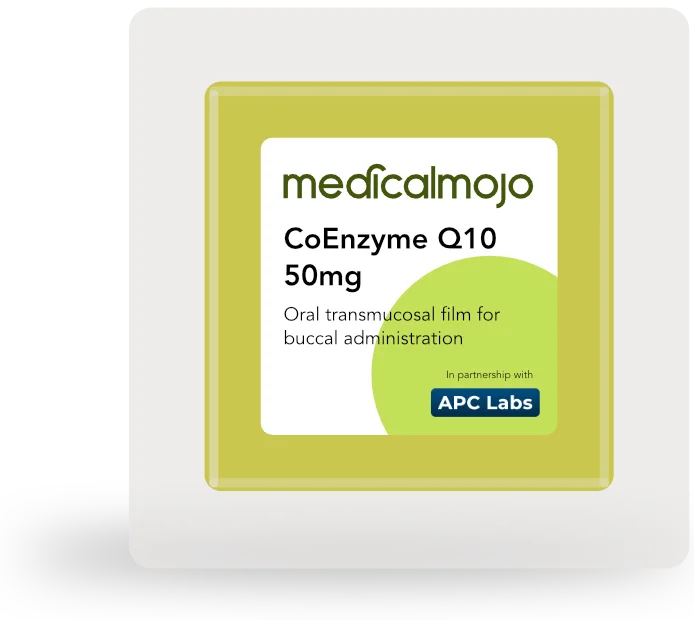Biologically, we’re most fertile in our adolescence and early twenties. After these optimal reproductive years, things start to go pear-shaped. Our bodies begin to prepare for the eventual departure from this earth to make way for the next generation. One of the things the body does in preparation for our exit from our floating celestial home is that it produces less and less of Coenzyme Q10 or CoQ10.
Why is CoQ10 so essential that life cannot be sustained or even started without it? What’s the role of CoQ10 in fertility? Before we attempt to answer these questions, let’s quickly review why this vital vitamin-like substance is so crucial to our collective continual survival.
If you don’t speak fluent nerd and want to skip my technical explanation of how CoQ10 works, jump to the fourth paragraph for the regular human translation.
What is CoQ10?
CoQ10 is the compound that shuttles electrons from Complex I (or II) to Complex III in the electron transport chain within the cell’s powerhouses, the mitochondria [1]. The shuttling of electrons across the electron transport chain provides the energy to push protons to the outside of the inner membrane of the mitochondria. This then creates a proton gradient with respect to the inside, allowing the protons to flow back inside the matrix via the ATPase, creating energy in the form of ATP [2].
In addition to being a shuttle for the electrons, CoQ10 has a very important role as an antioxidant. This is because if the electrons can’t be carried from Complex to Complex in an organised fashion, they’ll leak out into the inner matrix of the mitochondria and wreak havoc as free radicals [3].
Okay, that sounds pretty scientific and abstract. Let’s see if we can translate “nerd” into everyday English so that it makes more sense.
How the body produces energy
The best way to view mitochondria is as the power stations of the body, but rather than producing electricity, they produce molecules of ATP, which are the equivalent of volts. Now, let’s stretch this metaphor further still and say that embedded in the inner membranes are hundreds of hydroelectric plants. Just as if things weren’t complicated enough, mitochondria have an outer and an inner membrane surrounding the “matrix.” No, not that Matrix! To get a clearer picture of mitochondria, take a look at the diagram below.

I’m hoping you know how hydroelectric dams work…but here’s a quick refresher if you don’t. Basically, a reservoir sits on top of a mountain or somewhere really high where a dam holds back the water. Water is then allowed to flow downhill under the force of gravity, where it turns a turbine to generate electricity.
So, if you keep this mental picture in your head and replace the water with protons and the turbines with the ATPase, you have a rough idea of how energy is created in the body. Incidentally, the ATPase is the smallest known machine, and yes, it actually rotates just like the turbines used to generate electricity. So, if there are fewer, or even worse, no buckets, we can’t refill the reservoir and eventually, there’ll be no water to flow down to produce energy. In the body, no CoQ10 equals little or no energy.
Ageing and lower CoQ10 levels
As most of us start to age we tend to experience a desire to take afternoon naps. We just don’t seem to have that boundless reserve of energy that we had when we were younger. We all start to slow down (unless, of course, you are supplementing with CoQ10), and this is because the body begins to produce less and less of the Coenzyme Q10. As a consequence of the reduced CoQ10 levels, we produce less cellular energy until a day when we no longer produce any energy. When this happens, life, as we know it, ceases.
However, before we finally pop off, our body tries to prepare us for the no-energy state we experience in death by gradually decreasing the CoQ10 levels. What’s helpful is that we can recognise when this is happening because our body starts to give us vital clues that appear as symptoms, the most obvious being the constant fatigue.
For women, one of the signs that CoQ10 levels are falling is that they become infertile as they age. This is because when there is a relative deficiency of CoQ10, the eggs a woman produces can’t produce enough energy, and as a result, when they’re fertilised by the sperm, the zygote or embryo is aborted. Coupled with the fact that conception demands a huge amount of energy, it stands to reason that CoQ10 due to its major role in ATP or energy production, will likewise play an important role in supporting sperm and egg quality and other aspects of fertility.
What happens when there’s not enough CoQ10 during a pregnancy?
So, as we age, we don’t produce enough ATP due to poorly functioning mitochondria or a severe lack of CoQ10. This, in turn, will affect both the quality and quantity of both the egg and sperm, increasing the risk of miscarriage. However, sometimes there might be just enough cellular energy production to stay above the threshold for miscarriage. What happens then? When this occurs, the embryo will continue to develop and mature, but in some cases, there may still be insufficient energy to separate the chromosomes properly during cell division.
An example of this is Trisomy 21, more commonly known as Down’s syndrome, where there are three copies of chromosome 21 instead of two. This example demonstrates why older women have a higher risk of bearing children with birth defects.
What does CoQ10 do for fertility?
CoQ10 supports fertility and enhances sperm and egg quality in two key ways. First, it plays a vital role in the electron transport chain, which generates energy in our cells. Higher levels of CoQ10 lead to increased energy production, enabling cells to function more efficiently, thereby benefiting sperm and egg maturation.
Second, CoQ10 acts as a powerful antioxidant, protecting cells from damage caused by harmful free radicals that seep out from the electron transport chain. This protection helps safeguard fertility and the overall health of the reproductive system.
As we have mentioned previously, CoQ10 levels naturally decrease with age. So, it begs the question of whether supplementing with CoQ10 will help improve and protect sperm and egg quality as we get older to keep us fertile for longer.
Now, let’s turn to the research. This article is just about women, so for all you men out there, you’ll have to wait to find out what CoQ10 does to your sperm in another blog…coming soon.
CoQ10 increases ovarian reserve
One randomised controlled study found that pretreatment with Coenzyme Q10 improves ovarian response and embryo quality in low-prognosis young women with decreased ovarian reserve. Yangying Xu found that women taking CoQ10 had an increased number of retrieved oocytes or eggs, higher fertilisation rates (67.49%), and more high-quality embryos [4].
CoQ10 increases egg quality and quantity in older women
As women age, their ability to reproduce decreases significantly, especially after their 30s, due to a drop in both the number and quality of their eggs. Ben-Meir, A.et al found that ageing affects the energy-producing parts of egg cells (mitochondria), leading to less energy (ATP) and problems with cell function. They discovered that key enzymes needed to make CoQ10 were lower in older women’s eggs. Supplementing with CoQ10 helped improve both egg quality and quantity in older females.
When the enzyme that produces CoQ10 was removed in animals, they experienced similar reproductive problems seen in ageing, but these issues were prevented by giving CoQ10. This suggests that the decline in fertility with age is linked to poor mitochondrial function, which can be helped by CoQ10 supplements [5].
What CoQ10 should I take for fertility?
If you’ve been researching CoQ10 as the elixir of life, you’ve probably come across the terms ubiquinone and ubiquinol. As if bioenergetics wasn’t complicated enough! Well, these two terms are fancy ways of telling us whether the CoQ10 has gained electrons, ubiquinol, or lost electrons, ubiquinone.
Should I take ubiquinol or ubiquinone for fertility?
Usually, the most common form of CoQ10 is ubiquinone which is converted to ubiquinol in the body. Many people take ubiquinol because it is the active form, but we all have the enzyme that converts ubiquinone into ubiquinol. So, unless there’s a specific issue with this enzyme, the only other advantage that ubiquinol has over ubiquinone is absorption.
Both ubiquinone and ubiquinol are fat soluble, with ubiquinol being better absorbed than ubiquinone. This is if we’re talking about traditional oral routes of drug delivery such as capsules. However, at Medical Mojo, we’ve worked with a compounding pharmacy to make a soluble oral patch that’s absorbed in the buccal cavity of the mouth.
Buccal drug delivery of CoQ10
The CoQ10 soluble oral patch is placed on the inside of the cheek and allowed to dissolve. This drug delivery method means that active ingredients don’t have to pass through the stomach and small intestines but get direct access to the bloodstream. It’s like a VIP pass straight into the circulation which means more of the CoQ10 is absorbed and less is wasted.
To learn more about the Medical Mojo Coezyme Q10 50mg soluble oral patch why not have a gander at our range of patches? The video below shows how to administer the CoQ10 50mg soluble oral patch.
How much CoQ10 should I take daily for fertility?
Most people typically get between 3mg and 6mg of CoQ10 daily from food sources like red meat, oily fish, legumes, and vegetables such as broccoli and spinach. For fertility support, experts recommend a daily intake of 100mg to 600mg of CoQ10. However, when using the soluble oral patch, since more is absorbed, doses of two to four patches daily should be sufficient to reach optimal CoQ10 levels.
How long should I take CoQ10 for improved fertility?
Since eggs take about 90 days to mature, it’s recommended that you take CoQ10 and other fertility supplements for at least three months to achieve the best results.

References:
- Casagrande, D., Waib, P.H. and Júnior, A.A.J., 2018. Mechanisms of action and effects of the administration of Coenzyme Q10 on metabolic syndrome. Journal of Nutrition & Intermediary Metabolism, 13, pp.26-32.
- Cogliati, S., Cabrera-Alarcón, J.L. and Enriquez, J.A., 2021. Regulation and functional role of the electron transport chain supercomplexes. Biochemical Society Transactions, 49(6), pp.2655-2668.
- Bentinger, M., Brismar, K. and Dallner, G., 2007. The antioxidant role of coenzyme Q. Mitochondrion, 7, pp.S41-S50.
- Xu, Y., Nisenblat, V., Lu, C., Li, R., Qiao, J., Zhen, X. and Wang, S., 2018. Pretreatment with coenzyme Q10 improves ovarian response and embryo quality in low-prognosis young women with decreased ovarian reserve: a randomised controlled trial. Reproductive Biology and Endocrinology, 16, pp.1-11.
- Ben-Meir, A., Burstein, E., Borrego-Alvarez, A., Chong, J., Wong, E., Yavorska, T., Naranian, T., Chi, M., Wang, Y., Bentov, Y., Alexis, J., Meriano, J., Sung, H. K., Gasser, D. L., Moley, K. H., Hekimi, S., Casper, R. F., & Jurisicova, A. (2015). Coenzyme Q10 restores oocyte mitochondrial function and fertility during reproductive ageing. Aging cell, 14(5), 887–895; Alahmar A. T. (2019). The impact of two doses of coenzyme Q10 on semen parameters and antioxidant status in men with idiopathic oligoasthenoteratozoospermia. Clinical and experimental reproductive medicine, 46(3), 112–118


